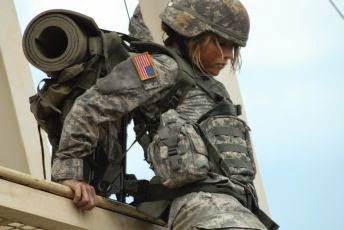Collectivist China's nat'l pride feel good sortee sexercise with Shi Lang aside, Great Satan's Quad Def Review prophesied that People’s Liberation Army Navy would focus without modesty or restraint on her twin dreams of area denial, securing needed resources and Taiwan:
First, China seeks to deny access by Great Satan and other naval powers to the Yellow, East China and South China Seas, dominating the natural resources and disputed island chains such as the Spratly and Senkaku Island chains giving PLAN the capacity to rehook upify Taiwan with the mainland by force and without US interference, if necessary. China’s assertiveness in confronting and harassing Asian and US civilian and naval ships in the region over the past decade shows a sustained level of determination on this front.Considering the not so peaceful looking rise of a rowdy China, sev quizes need to be answered what does it mean for Great Satan and her BFF's like Australia, Nippon, SoKo and Taiwan to lose military primacy in PACRIM? Does Great Satan's credibility depend on the ability to dominate China’s maritime periphery? And what are the funintended consequences of a military no-go zone in the Western Pacific?
2nd China seeks international prestige and a power projection capacity in the Pacific and Indian Ocean sea lanes by deploying multiple aircraft carriers and fifth-generation stealth fighter-bombers. The booming Chinese economy has become ever more dependent on imported minerals and oil from Africa and the Middle East, and the ability to protect its Indian Ocean and Strait of Malacca sea lanes is a responsibility that China is no longer willing to delegate to other powers.
Hot gossip about sexing up "AirSea Battle" pdf (not be confused with AirLand Battle) to be China centric with the Pentagon's China Integration team reminds that AirSea Battle campaign has two stages.
Stage 1, commencing with the outbreak of hostilities, comprises four distinct lines of operation:
- Withstanding the initial attack and limiting damage to Great Satan and allied forces
and bases; - Executing a blinding campaign against PLA battle networks;
- Executing a suppression campaign against PLA long-range ISR and strike
systems; - Seizing and sustaining the initiative in the air, sea, space and cyber domains
- Executing a protracted campaign that includes sustaining and exploiting the initiative in various domains;
- Conducting “distant blockade” operations;
- Sustaining operational logistics; and
- Ramping up industrial production (especially precision-guided munitions).
Maybe not
An arms race is already underway in Asia. AirSea Battle will accelerate this process, with serious implications for regional stability and crisis management. First, by creating the need for a continued visible presence and more intrusive forms of surveillance in the Western Pacific, AirSea Battle will greatly increase the range of circumstances for maritime brinkmanship and dangerous naval incidents.
Second, AirSea Battle’s emphasis on pre-empting China by striking early against the PLA will continue to compress the time available to decision-makers in a crisis. As military plans become increasingly dependent on speed and escalation, and diplomacy fails to keep up, a dangerous ‘use it or lose it’ mentality is likely to take hold in the minds of military commanders. This risks building an automatic escalator to war into each crisis before diplomatic efforts at defusing the situation can get underway.
And finally, AirSea Battle calls for deep strikes on the Chinese mainland to blind and suppress PLA surveillance systems and degrade its long-range strike capabilities. Such an attack, even if it relied solely on conventional systems, could easily be misconstrued in Beijing as an attempt at pre-emptively destroying China’s retaliatory nuclear options. Under intense pressure, it would be hard to limit a dramatic escalation of such a conflict – including, in the worst case, up to and beyond the nuclear threshold.
Taken together, the costs and risks associated with AirSea Battle spell trouble for US primacy in Asia, and for the sea control and power projection capabilities on which it relies. Yet while Washington’s comfortable hegemonic habits will be hard to kick – especially after so many peaceful, prosperous decades – it’s not all doom and gloom.
There are other, more cost effective ways of doing that, including by playing China at its own game. That would involve developing a maritime denial strategy, focused mainly on the use of submarines, designed to inhibit China’s use of the sea for its own power projection. Indeed, the same capabilities that imperil US power projection in the Western Pacific would have an equally profound effect on China’s own fledgling efforts.
Pic - "We have to decide whether we’re going to compete or not. If we’re not, then we have to be willing to accept the shift in the military balance."














2 comments:
Girlfriend, their two carriers alone will be able to project Chinese power out of their traditional spheres and onto our usual safe spots. Think oil drilling in the Gulf (of Mexico) or Cuba. And a Chinese carrier loitering off the coast. Of course, the big decks are not ready yet, but will be soon, right? V/R, NavyOne
The Chinese should be aware (as should we) that continued moves in this direction will eventually motivate the Japanese to start to build their own carriers (and not buy castoff junk from Russia).
TRUST ME ... having been stationed in Yokosuka for over 4 years, it would take no time at all for the Japanese to throw together a couple of them just exactly like (or probably bigger than) the ones we already have in service.
With all of the years they have spent with ours sitting in their dry docks in Yokosuka with their workers crawling all over them and complete designs in their hands, PLUS the fact that the Sumitomo yards are just across the bay from our base (we used to watch them build the world's largest oil tankers like an assembly line) ... it wouldn't be much of a stretch for them.
I think we are all aware of what motivated Japanese can do with aircraft carriers.
Post a Comment